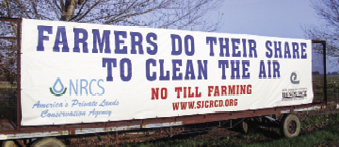Commentary: Practices can optimize soil health, benefit farmers


Jeffrey Mitchell
For many years, a large billboard displayed along Interstate 5 near Tracy in San Joaquin County proclaimed that no-till “farmers do their share to clean the air.”
Whenever I drove by, I marveled at the visibility and positive message the sign may have had for farmers in the region, even though there were likely no more than a handful of no-till farmers within a 100-mile radius of the sign.
To be clear, farmers of perennial crops such as citrus, nuts and grapes have adapted to reduce soil-degrading tillage over many years. However, for the vast majority of annual crops, tillage-intensive practices are still very much the norm.
A current media blitz around the notion of “soil health” is unfolding now in recognition that maintaining soil function for crop production is a major requirement of agricultural systems and global food security.
Its momentum can be traced to 2012 and the Carroll, Ohio, farm of longtime no-till and cover crop farmer David Brandt. There, the U.S. Department of Agriculture Natural Resources Conservation Service launched “Unlock the Secrets in the Soil,” a national campaign about the core principles of conservation agriculture and soil health.
From 2017 to 2021, NRCS provided over $160 million in funding for soil health-related conservation activities on over 2,000 projects in California. Since 2017, California Department of Food and Agriculture’s Healthy Soils Program has invested over $75 million in more than 900 incentivizing effective soil health management practices.
Over the years, farmers and researchers have explored various approaches to optimize soil functions that are essential for productive and profitable farming. Practices known as “conservation agriculture” reduce soil disturbance and erosion, enhance biological diversity and maximize healthy root systems.
But the reflections of Ray Archuleta, a former longtime scientist with the NRCS and member of the agency’s original Soil Health Division, are worth noting. When it comes to soil health, Archuleta is fond of pointing out, we may have become accustomed to working with an essentially “degraded resource”—because we no longer recognize what good soil function and health actually look like.
For example, some growers may be used to ponded water in the low parts of their fields following rain events, very low soil structural stability, or high water evaporation in their soils as the norm. But improved soil-health practices could add long-term value to farming operations.
Why is there this apparent disconnect between soil health principles being understood and pursued by some, but ignored by many others? Some historical perspective might be useful.
In the first half of the 19th century, farmers faced a similar challenge of how to care for the soil. According to “Larding the Lean Earth—Soil and Society in the 19th Century” by Steven Stoll, a national debate unfolded about whether agriculture ought to preserve good husbandry and soil stewardship of farmland with the Eastern Seaboard region of the 13 original colonies, or whether those lands should be abandoned and farms moved west after depleting the soil’s capacity.
Arguments flared over calls to action for greater attention to soil health. One camp, which became known as the “improvers,” argued that good soil care at existing farms was what was needed. Another saw agriculture’s future in migration.
Today’s situation is thus not new. Some farmers are heeding the call to improve their soils, while many still are clearly not. Yet perhaps now more than ever, the agricultural marketplace appears to reward food production systems that focus on improved soil health and greater efficiencies with water capture and storage by soils. Some farmers are considerably ahead of the curve in realizing improved performance production systems.
Our own soon-to-be-published long-term research in the San Joaquin Valley provides strong evidence that the combined use of fundamental soil health principles improves soil health compared to conventional practices for annual crop rotations.
Our data suggest that farmers stand to gain multiple benefits for the coupled use of these practices by increasing soil structural stability, water infiltration and storage, and agroecosystem biodiversity, while improving the efficiencies of the carbon, nitrogen and water cycles in their production systems.
These improvements represent potential new opportunities in annual crop fields throughout the state. While the up-front implementation outlays may discourage initial adoption by some, the common-good costs of achieving such sustained ecosystem improvement rightly need to be borne by our food system at large, rather than farmers themselves.
Thus, more robust market- and outcome-based mechanisms will be needed to help farmers make these critically important—and beneficial—changes.
(Jeffrey Mitchell is chair of the Conservation Agriculture Systems Innovation Center and a professor and Cooperative Extension cropping systems specialist at the University of California, Davis. He may be contacted at jpmitchell@ucdavis.edu.)




